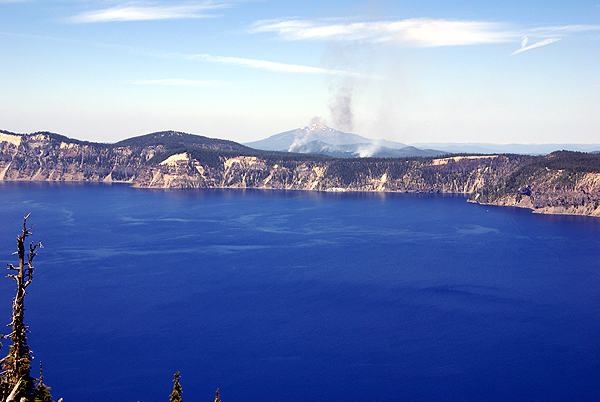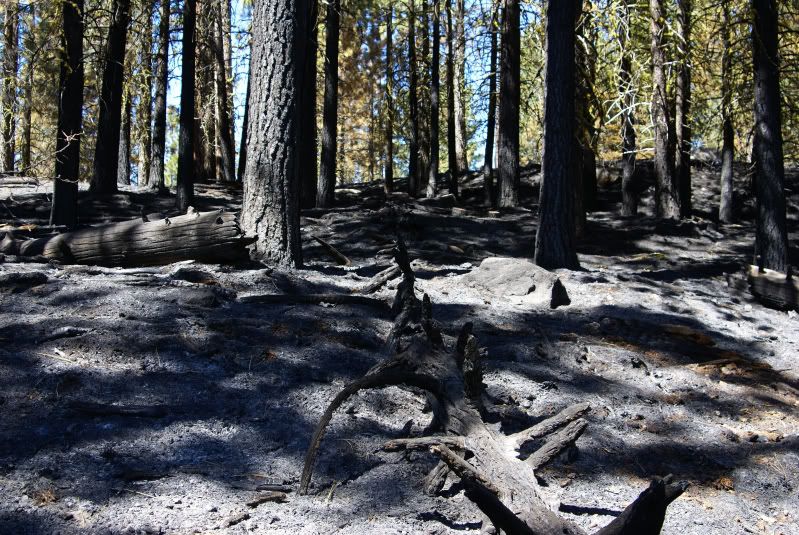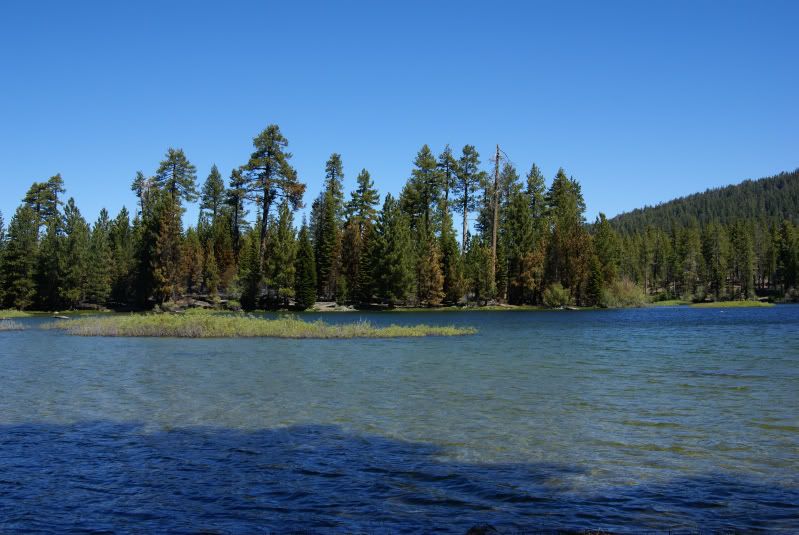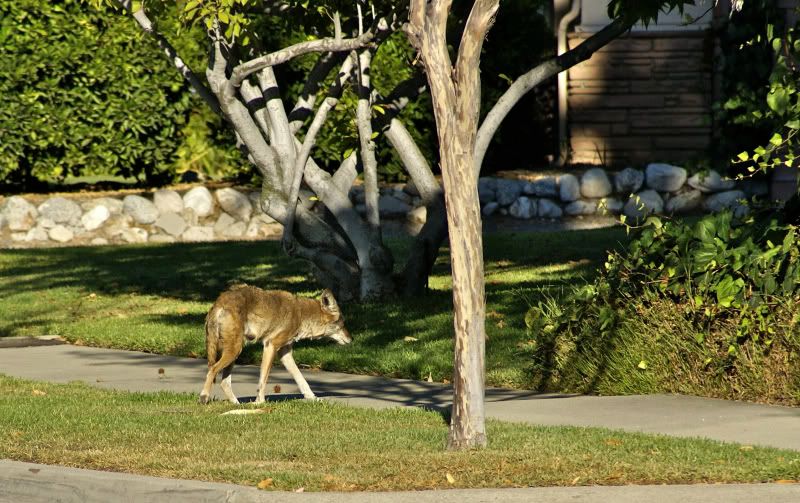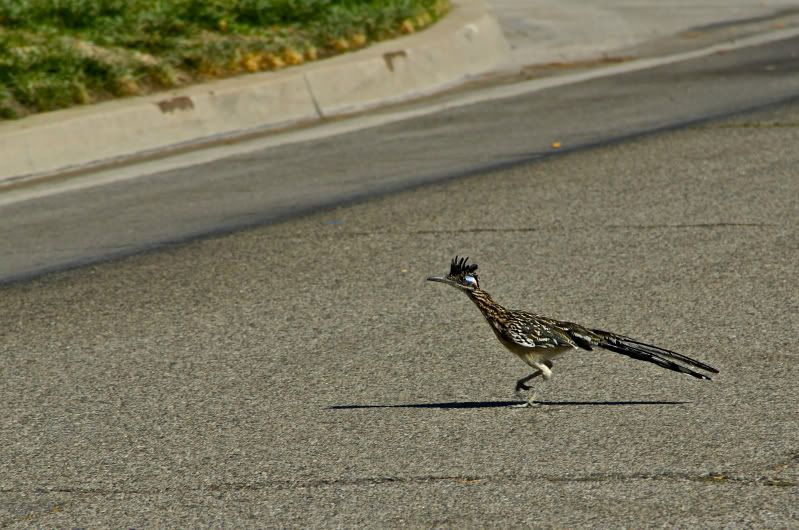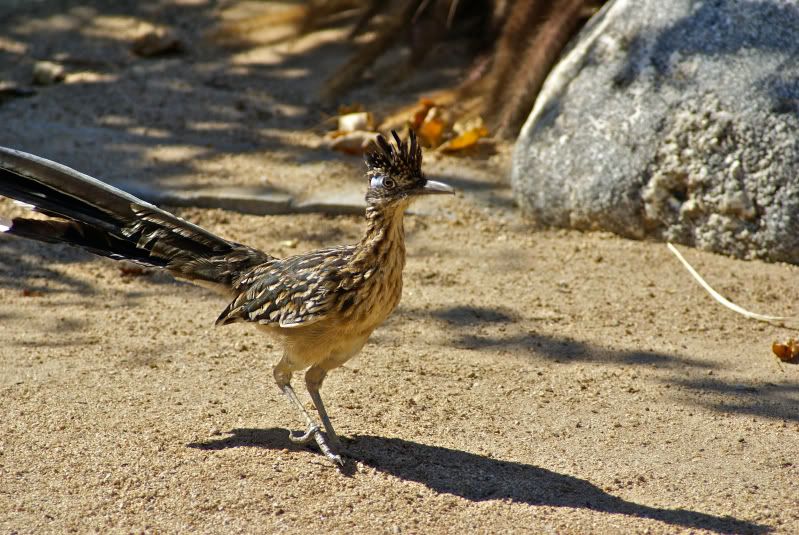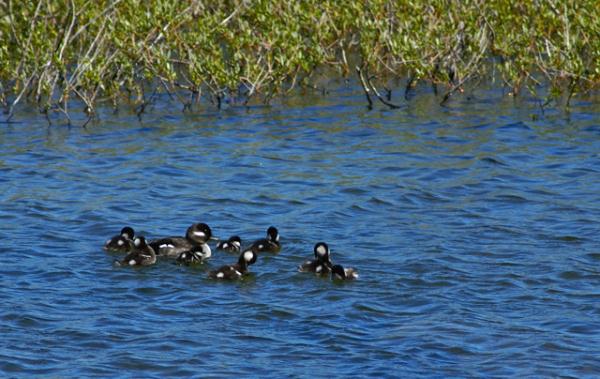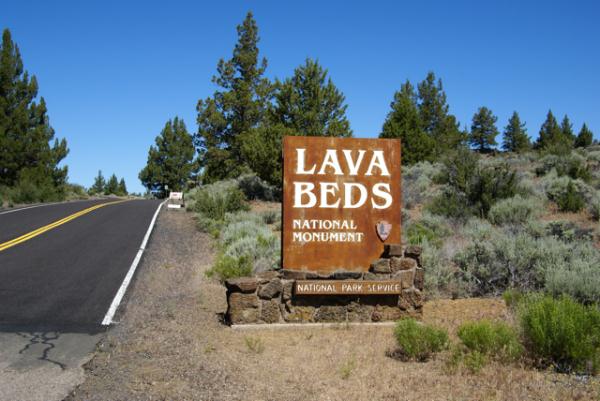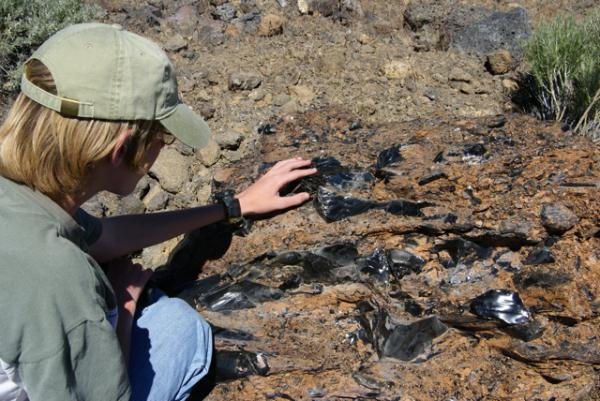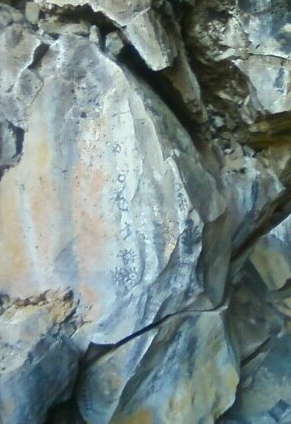Long before we'd planned our summer camping trip, we knew the GPS Maze exhibit was going to be in Redding throughout this summer.  After I pointed this out to the Tadpole early in the springtime, he stated he wanted to visit it, so I started planning our vacation around Redding. With Lassen National Park, just an hour or so to the east, it was a no brainer to figure out where we were going to camp, and at that point, things started to fall into place.
After I pointed this out to the Tadpole early in the springtime, he stated he wanted to visit it, so I started planning our vacation around Redding. With Lassen National Park, just an hour or so to the east, it was a no brainer to figure out where we were going to camp, and at that point, things started to fall into place.
Later one, I found out that Chaosmanor was going to be up in the area sometime during the summer as well. Their youngest daughter was getting married in late June along the coast of California, and so we plotted to see whether we could meet up at the Maze at the same time. There was also an outside possibility that the maze could be their 4000th cache find as well, so it would be fun to share that with them.
Chaosmanor was coming from Klamath Falls, OR, and were farther away. We didn't know exactly when they'd get there, but we planned on meeting and having lunch at the Turtle Bay Museum and either going through the maze beforehand, or afterwards depending upon arrival times of both of us. The Tadpole and I headed out in the morning, grabbing a couple of caches along the way, including a nice benchmark virtual cache just east of Redding.
We got to the museum and paid our admission and then walked around the grounds. The Turtle Bay Exploration Park is a science museum and much more. It appears to be built upon an estuary of the Sacramento River. There were walkways from the entrance/gift shop over to the main building of the museum which sat on the bank of the Sacramento River. Surprisingly, the wetland area was relatively dry, considering how moist the winter had been.
We decided to wait on the museum, opting for the butterfly exhibit, where they had multitudes of different kinds of butterflies flying freely.  We had to watch our step so as to not crush the butterflies that might be on the path. I've experienced one of these houses at the San Diego Zoo about 30 years ago, but this was a first for the Tadpole. Still, I'm not sure who was more excited about this little side excursion, he or me.
We had to watch our step so as to not crush the butterflies that might be on the path. I've experienced one of these houses at the San Diego Zoo about 30 years ago, but this was a first for the Tadpole. Still, I'm not sure who was more excited about this little side excursion, he or me.
After an abortive attempt on a geocache just outside the fence to the park, we decided to head over to the museum and view some of the exhibits. The science museum is centered around the ecology of the Sacramento River, so there were many different exhibits with live fish from the river, as well as other exhibits about the Native American population that used to inhabit the area. We spent the better part of an hour enjoying ourselves with the different exhibits offered. There was also a photograph gallery, with some very good amateur photographs on display.
The only thing that we hadn't explored yet, was the GPS Maze. We walked into the entrance area for the maze, looked at some of the stuff available for sale at the gift kiosk located outside the maze, then decided to walk across the river on the bridge behind the museum (more on this in a later post). There were people out and about, enjoying the warm day with their family, friends and animals. We walked to the far side of the bridge, then decided to find a cache on that side. There were other caches further down, but we didn't take advantage of those, since we were both starting to get hungry and neither of us is a good cacher when we're hungry.
Fortunately, Chaosmanor called at that time saying they were outside and to expect them shortly, so we headed back across the bridge and met them in the museum foyer. After a hearty lunch, we headed over to the GPS Maze exhibit. 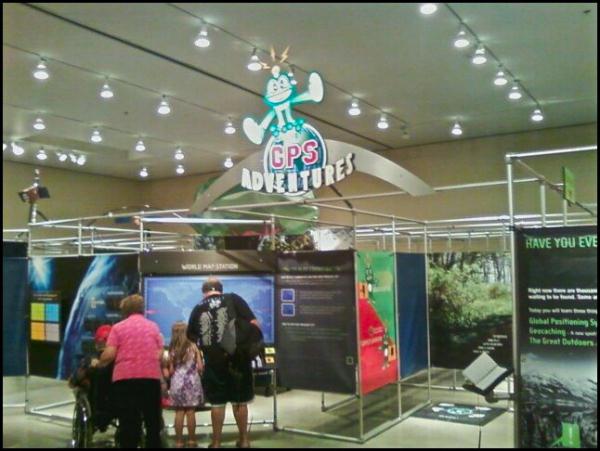 The maze exhibit, is just that, a maze, with partitions and displays along almost all of the walls of the exhibit. The purpose is to explain GPS technology and the hobby of geocaching. While in the maze, we had to find four different geocaches, which contained clues that allowed us to enter locked rooms within the maze that held special areas. One entire locked room was dedicated to travel bugs and geocoins.
The maze exhibit, is just that, a maze, with partitions and displays along almost all of the walls of the exhibit. The purpose is to explain GPS technology and the hobby of geocaching. While in the maze, we had to find four different geocaches, which contained clues that allowed us to enter locked rooms within the maze that held special areas. One entire locked room was dedicated to travel bugs and geocoins.
Almost immediately, we were separated from Chaosmanor as they chose a different path in the maze. We eventually met up with them and discovered that we'd each solved three of the locked areas and had but the same locked area to solve before we were able to get out of the maze. We did that last section together and it took all of us a fairly long time to find that last geocache. I think I had my fingers on it at one point, but didn't realize what I was touching. Eventually, we worked our way through the maze and back into the main area, where we both spent, probably more money than we should have on geocaching paraphernalia.
The overall construction of the maze was probably the highlight point of the maze. It had been made in such a way so as to not frustrate novice museum goers, who just wanted to experience the maze. It wasn't too difficult for them, yet it wasn't easy and possibly boring for experienced geocachers. It was truly well done.
We decided to walk the museum again with Chaosmanor, then went over to the butterfly exhibit again as well. 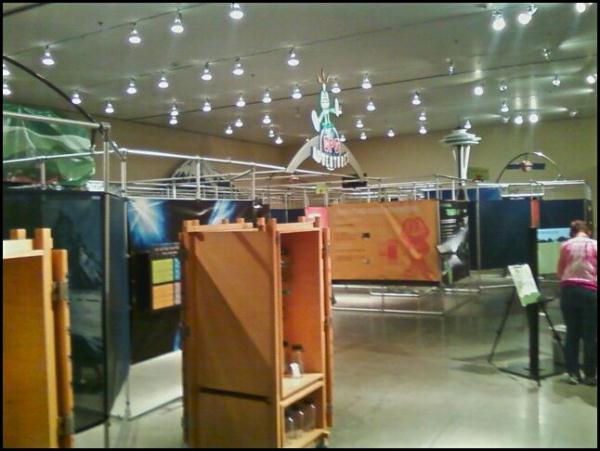 We also went outside the park, and found that geocache I had been unable to find earlier in the day. One of the reasons I enjoy caching with others, is it gives one or more sets of eyes looking at the same things. I couldn't find it earlier, yet I was the one who came up with the find when all three of us were out there. Sometimes I think there is more pressure when you're by yourself to find the cache, and so the obvious doesn't always jump out at you. I seem, for whatever reason, to be able to make the geosensing jumps better when caching with others.
We also went outside the park, and found that geocache I had been unable to find earlier in the day. One of the reasons I enjoy caching with others, is it gives one or more sets of eyes looking at the same things. I couldn't find it earlier, yet I was the one who came up with the find when all three of us were out there. Sometimes I think there is more pressure when you're by yourself to find the cache, and so the obvious doesn't always jump out at you. I seem, for whatever reason, to be able to make the geosensing jumps better when caching with others.
The maze is there until Labor Day. I'm actually hoping that as it hopscotches around the country, it makes an appearance in Southern California. I wouldn't mind taking a tour of it again. It was a fun day, exploring both the maze and the museum grounds.
My apologies for the poor quality pictures. My main camera's battery died the day before, so these were all taken with my cell phone.
Pictures were taken at or near the following geocache:
GPS Adventures Maze Exhibit-Turtle Bay Park - by Groundspeak



